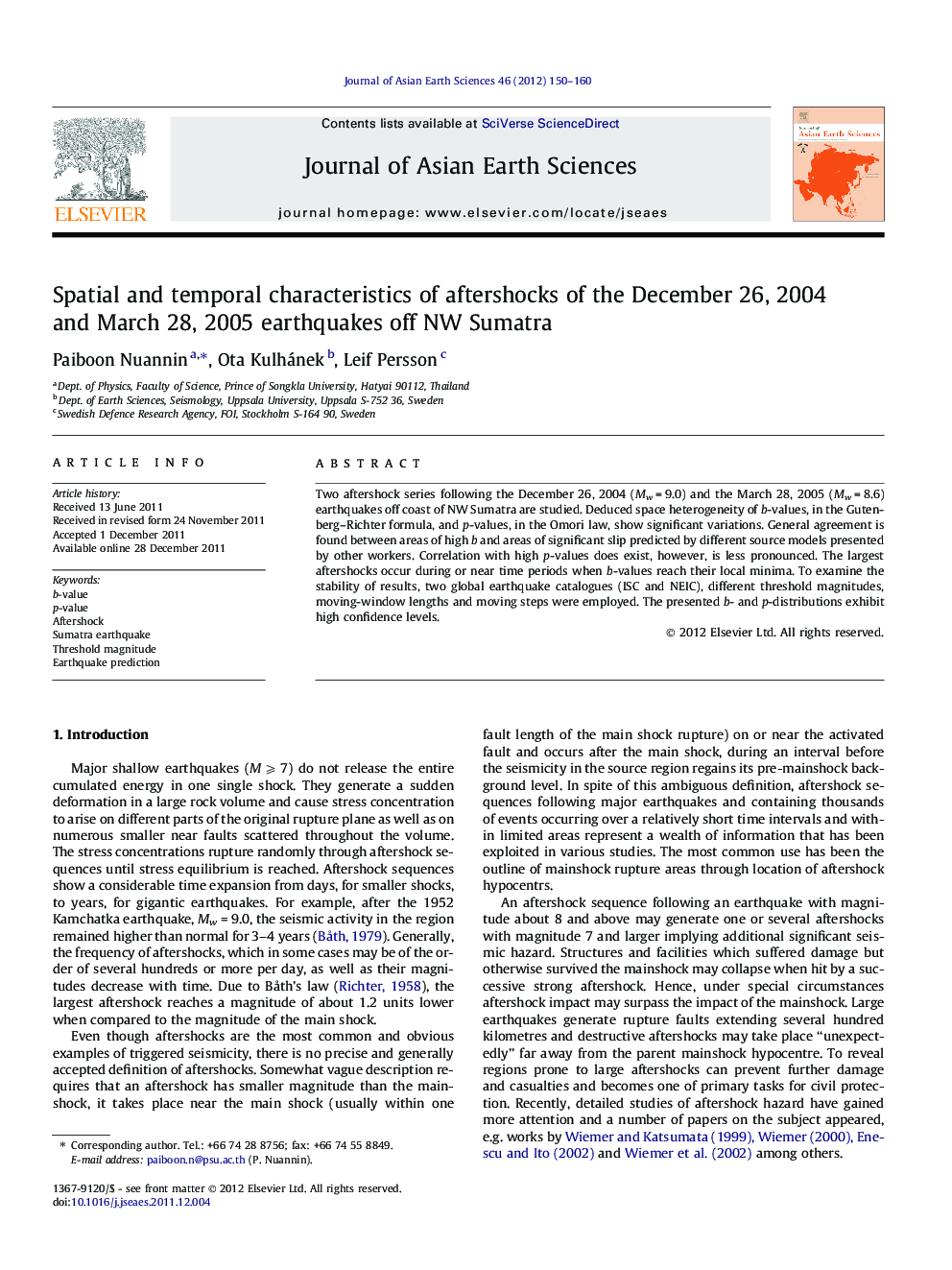| کد مقاله | کد نشریه | سال انتشار | مقاله انگلیسی | نسخه تمام متن |
|---|---|---|---|---|
| 4731541 | 1640418 | 2012 | 11 صفحه PDF | دانلود رایگان |

Two aftershock series following the December 26, 2004 (Mw = 9.0) and the March 28, 2005 (Mw = 8.6) earthquakes off coast of NW Sumatra are studied. Deduced space heterogeneity of b-values, in the Gutenberg–Richter formula, and p-values, in the Omori law, show significant variations. General agreement is found between areas of high b and areas of significant slip predicted by different source models presented by other workers. Correlation with high p-values does exist, however, is less pronounced. The largest aftershocks occur during or near time periods when b-values reach their local minima. To examine the stability of results, two global earthquake catalogues (ISC and NEIC), different threshold magnitudes, moving-window lengths and moving steps were employed. The presented b- and p-distributions exhibit high confidence levels.
► We studied two aftershocks of Sumatra mainshocks of December 26, 2004 and March 28, 2005.
► Space heterogeneities of b- and p-values are robust and real.
► Temporal perturbations of b-values are robust and real.
► We found an agreement between areas of high b and areas of significant slip.
► Correlation with high p-values does exist, however, is less pronounced.
Journal: Journal of Asian Earth Sciences - Volume 46, 2 March 2012, Pages 150–160